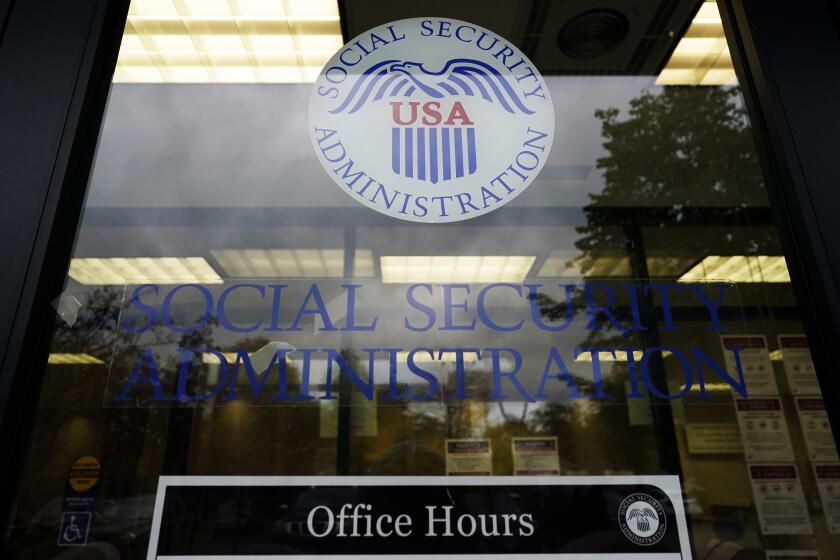7 Indicted in 1983 Bombing of U.S. Capitol
- Share via
WASHINGTON — Seven members of a revolutionary group protesting U.S. international and domestic policies have been indicted for setting off a time bomb in the U.S. Capitol in 1983 and committing seven other terrorist bombings here and in New York, officials said Wednesday.
The indictment, announced by U.S. Atty. Jay B. Stephens, charged that the seven suspects--all but one of whom is in prison on other charges--belonged to a self-described secret “communist politico/military organization” and resorted to the terrorist acts to protest and influence U.S. domestic and international policies.
Brings Tighter Security
The Capitol explosion, which took place at night in an alcove close to the Senate chamber, could have caused extensive loss of life if the Senate had not canceled a scheduled evening session, authorities said after the Nov. 7, 1983, incident. The bombing resulted in much tighter security measures at the Capitol and elsewhere in Washington that are still in effect.
In addition to the Capitol bombing, the indictment charged the seven with conspiring to detonate explosives at three Washington military facilities and a number of sites in New York, including an FBI office on Staten Island, the Israeli Aircraft Industries Building, the South African Consulate and the Patrolmen’s Benevolent Assn.
‘Armed Propaganda’
The conspirators also were charged with surveying other bombing targets as part of their “armed propaganda” campaign, including the Old Executive Office Building adjacent to the White House, the U.S. Naval Academy in Annapolis and the Army Aberdeen Proving Ground in Maryland.
Defendants include Elizabeth Duke, who is being sought as a fugitive, Laura Whitehorn, Linda Evans, Marilyn Buck, Susan Rosenberg, Timothy Blunk and Alan Berkman, all of whom are incarcerated for other crimes, according to a Justice Department spokesman.
In the alleged conspiracy, which began in July, 1982, and extended to May 23, 1985, the defendants and unnamed co-conspirators operated under the organizational names Revolutionary Fighting Group, Armed Resistance Unit and the Red Guerrilla Resistance.
Use Extensive Aliases
To carry out their plots, the defendants allegedly obtained rifles, shotguns, handguns, bulletproof armor and combined time-delay firing mechanisms with explosives to produce bombs, according to the indictment. Funding their operations in part through theft and armed robbery, they extensively used aliases and false identification to evade detection by law enforcement authorities.
Once arrested, the defendants would prepare and send to co-conspirators still at large descriptions and evaluations of their apprehensions, emphasizing “traces” that might help their co-conspirators to evade arrest, the indictment charged.
After the Capitol bombing, a group identifying itself as the Armed Resistance Unit mailed to National Public Radio and a Washington radio station a communique on the bombing that stated in part: “We purposely aimed our attack at the institutions of imperialist rule rather than at individual members of the ruling class and government. We did not choose to kill any of them this time. But their lives are not sacred. . . .”
The Washington military facilities hit by explosions included the National War College at Ft. McNair, the Computer Center at the Washington Navy Yard and the Navy Yard’s Officer’s Club.
In detailing each bombing, the indictment charged that “one or more unknown co-conspirators” actually set off the explosives.
Issues Warning
In announcing the indictments, Stephens said: “Let this be a warning to those who seek to influence the policies of the United States government through violence and terrorism that we will seek unrelentingly to bring them to justice. Those who attack our sacred institutions of government and seek to destroy the symbols of our democratic system ultimately will have to pay the price.”
Stephens credited the cooperative efforts of the FBI, the Alcohol, Tobacco and Firearms Bureau and the District of Columbia Metropolitan Police, which formed a terrorist task force to investigate the bombings a month after the Capitol explosion. The task force coordinated its efforts with those of the Joint Terrorist Task Force in New York and FBI and ATF offices in Philadelphia and Baltimore, Stephens said.
More to Read
Sign up for Essential California
The most important California stories and recommendations in your inbox every morning.
You may occasionally receive promotional content from the Los Angeles Times.










